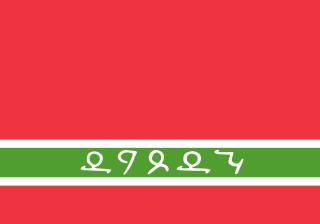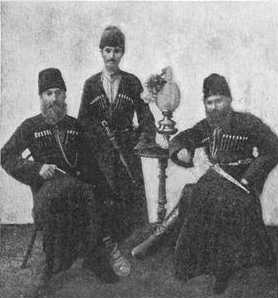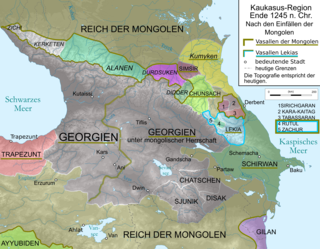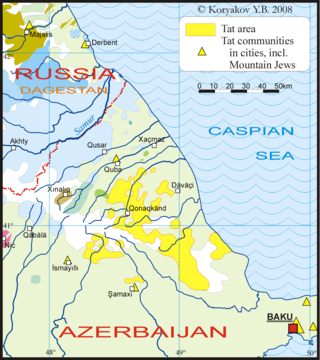
Persian, also known by its endonym Farsi or Parsi, is a Western Iranian language belonging to the Iranian branch of the Indo-Iranian subdivision of the Indo-European languages. Persian is a pluricentric language predominantly spoken and used officially within Iran, Afghanistan, and Tajikistan in three mutually intelligible standard varieties, respectively Iranian Persian, Dari Persian, and Tajiki Persian. It is also spoken natively in the Tajik variety by a significant population within Uzbekistan, as well as within other regions with a Persianate history in the cultural sphere of Greater Iran. It is written officially within Iran and Afghanistan in the Persian alphabet, a derivative of the Arabic script, and within Tajikistan in the Tajik alphabet, a derivative of the Cyrillic script.
The Persians are an Iranian ethnic group who comprise over half of the population of Iran. They share a common cultural system and are native speakers of the Persian language as well as of the languages that are closely related to Persian.

Iran's population increased dramatically during the later half of the 20th century, reaching about 80 million by 2016. As of 2022, Iran's population is around 86.5 million. In recent years, however, Iran's birth rate has dropped significantly. Studies project that Iran's rate of population growth will continue to slow until it stabilises above 100 million by 2050. Half of Iran's population was under 35 years old in 2012.

Azerbaijani or Azeri, also referred to as Azeri Turkic, is a Turkic language from the Oghuz sub-branch. It is spoken primarily by the Azerbaijani people, who live mainly in the Republic of Azerbaijan, where the North Azerbaijani variety is spoken, and in the Azerbaijan region of Iran, where the South Azerbaijani variety is spoken. North Azerbaijani has official status in the Republic of Azerbaijan and Dagestan, but South Azerbaijani does not have official status in Iran, where the majority of Azerbaijani people live. Azerbaijani is also spoken to lesser varying degrees in Azerbaijani communities of Georgia and Turkey and by diaspora communities, primarily in Europe and North America.

Lezgins are a Northeast Caucasian ethnic group native predominantly to southern Dagestan, a republic of Russia, and northeastern Azerbaijan, and speak the Lezgin language. Their social structure is firmly based on equality and deference to individuality. Lezgin society is structured around djamaat and has traditionally been egalitarian and organised around many autonomous local clans, called syhils (сихилар).

Mountain Jews or Caucasus Jews, also known as Juhuro,Juvuro,Juhuri,Juwuri, Juhurim,Kavkazi Jews or Gorsky Jews, are Jews of the eastern and northern Caucasus, mainly Azerbaijan, and various republics in the Russian Federation: Chechnya, Ingushetia, Dagestan, Karachay-Cherkessia, and Kabardino-Balkaria. The Mountain Jews comprise Persian-speaking Jewry along with the Jews of Iran, Afghanistan, and Central Asia. The Mountain Jews are the descendants of Persian Jews from Iran, and fall within the Mizrachi category of Jews. Mountain Jews took shape as a community after Qajar Iran ceded the areas in which they lived to the Russian Empire as part of the Treaty of Gulistan of 1813.

The Tat people are an Iranian people presently living within Azerbaijan and Russia. The Tats are part of the indigenous peoples of Iranian origin in the Caucasus.

The Caucasian languages comprise a large and extremely varied array of languages spoken by more than ten million people in and around the Caucasus Mountains, which lie between the Black Sea and the Caspian Sea.

Azerbaijanis, Azeris, or Azerbaijani Turks are a Turkic ethnic group living mainly in the Azerbaijan region of northwestern Iran and the Republic of Azerbaijan. They are predominantly Shia Muslims. They comprise the largest ethnic group in the Republic of Azerbaijan and the second-largest ethnic group in neighboring Iran and Georgia. They speak the Azerbaijani language, belonging to the Oghuz branch of the Turkic languages.

Dagestan, officially the Republic of Dagestan, is a republic of Russia situated in the North Caucasus of Eastern Europe, along the Caspian Sea. It is located north of the Greater Caucasus, and is a part of the North Caucasian Federal District. The republic is the southernmost tip of Russia, sharing land borders with the countries of Azerbaijan and Georgia to the south and southwest, the Russian republics of Chechnya and Kalmykia to the west and north, and with Stavropol Krai to the northwest. Makhachkala is the republic's capital and largest city; other major cities are Derbent, Kizlyar, Izberbash, Kaspiysk, and Buynaksk.

Judeo-Tat or Juhuri is a Judeo-Persian dialect of the Tat language historically spoken by the Mountain Jews, primarily in Azerbaijan, Dagestan, and today in Israel. It belongs to the southwestern group of the Iranian division of the Indo-European languages with heavy influence from the Hebrew language. In the era of Soviet historiography, the Mountain Jews were mistakenly considered to be related to the Muslim Tats of Azerbaijan. However, they do not share a common linguistic heritage, as the Mountain Jews kept their native language, while the Muslim Tats eventually adopted Persian. The words Juvuri and Juvuro translate as "Jewish" and "Jews".

The peoples of the Caucasus, or Caucasians, are a diverse group comprising more than 50 ethnic groups throughout the Caucasus.

Talysh is a Northwestern Iranian language spoken in the northern regions of the Iranian provinces of Gilan and Ardabil and the southern regions of the Republic of Azerbaijan by around 500,000-800,000 people. Talysh language is closely related to the Tati language. It includes many dialects usually divided into three main clusters: Northern, Central (Iran) and Southern (Iran). Talysh is partially, but not fully, intelligible with Persian. Talysh is classified as "vulnerable" by UNESCO's Atlas of the World's Languages in Danger.

New Persian, also known as Modern Persian is the current stage of the Persian language spoken since the 8th to 9th centuries until now in Greater Iran and surroundings. It is conventionally divided into three stages: Early New Persian, Classical Persian, and Contemporary Persian.

The Western Iranian languages or Western Iranic languages are a branch of the Iranian languages, attested from the time of Old Persian and Median.
The Azerbaijani people are a Turkic ethnic group of mixed ethnic origins, primarily the indigenous peoples of eastern Transcaucasia, the Medians, an ancient Iranian people, and the Oghuz Turkic tribes that began migrating to Azerbaijan in the 11th century CE. Modern Azerbaijanis are the second most numerous ethnic group among the Turkic peoples after Anatolian Turks and speak North Azerbaijani and/or South Azerbaijani. Both languages also have dialects, with 21 North Azerbaijani dialects and 11 South Azerbaijani dialects.

Lahıc is a village and municipality on the southern slopes of Greater Caucasus within the Ismailli Rayon of Azerbaijan. Population is approximately 860 people who speak the Tat language, also known as Tati Persian, a Southwestern Iranian language spoken by the Tats of Azerbaijan and Russia.

The Tati language is a Northwestern Iranian language spoken by the Tat people of Iran which is closely related to other languages such as Talysh, Zaza, Mazandarani and Gilaki.
Iranian Russians or Persian Russians are Iranians in the Russian Federation, and are Russian citizens or permanent residents of (partial) Iranian national background.

Tat - are Iranian-speaking people who live in Azerbaijan and Russia. They profess Islam - Shiite and Sunni directions. The Sunni Tats mainly live in the Guba and Shabran regions of Azerbaijan and also in Dagestan (Russia) they inhabit villages to the west of the city of Derbent. Also, the Tats live in Georgia - Gombori.


















